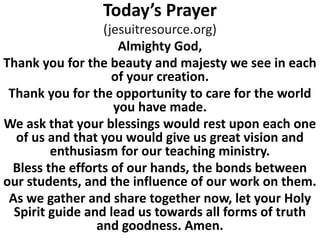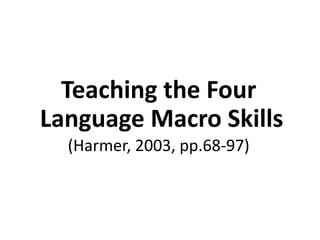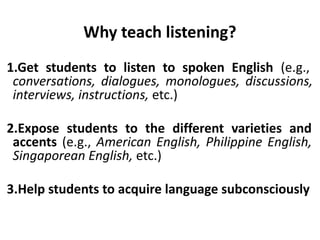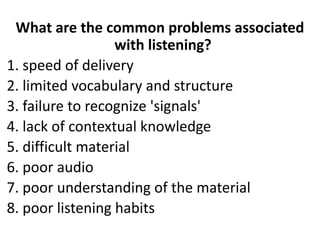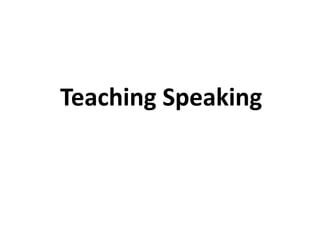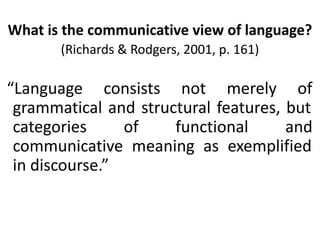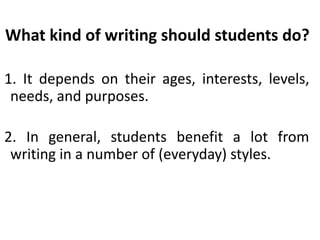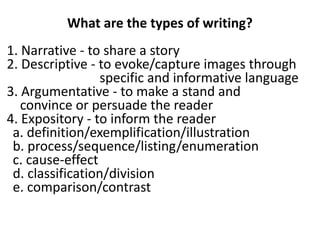This document contains a prayer, an outline of a teaching session on teaching the four language macro skills of listening, speaking, reading and writing, and information from the referenced source on teaching each skill. The prayer thanks God for creation, the opportunity to care for the world, and asks for blessings on the teaching ministry. The session outline includes attendance, reviewing previous material, discussing and sharing the input on teaching the four skills, and presenting an asynchronous task. Details are then provided on teaching each skill, including definitions, reasons for teaching, common problems and principles. The document concludes by looking at the big picture of the language teacher's role in creating a positive learning environment.
